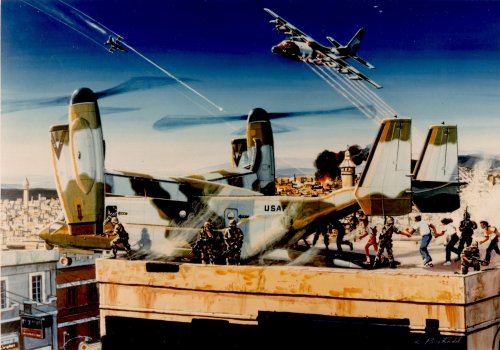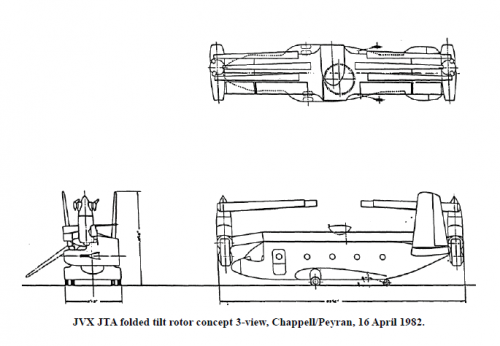G'day all
Just stumbled across and listen to this podcast with Rick Whittle, the author of
The Dream Machine: The Untold History of the Notorious V-22 Osprey,
Very interesting!
Sound like a book worth getting!!
"The Osprey was supposed to do ten mission for all four armed services. For the Marines, it was supposed to do amphibious assaults and other transport missions that the CH-46 flew and the CH-53D flew, for the Air Force it was supposed to do special operations and combat search and rescue, for the Army — which didn’t end up buying any V-22s — they wanted the V-22 to do troop transport and medical evacuation and this wild spying mission, whose requirements said the aircraft had to cruise at 30,000 feet — that’s well above where you need oxygen — but evade surface to air missiles by diving toward the Earth at a decent rate of 20,000 feet per minute or more — that’s about 230 miles per hour — and do a split “S” maneuver, then dispense chaff and flairs as it was coming down at tree top level. And this is an aircraft that’s supposed to have rotors that will move…
Also, it was supposed to carry guns and missiles, and have external hard points for fuel tanks and electronic countermeasures, and pressurized against nuclear, biological, and chemical weapons contamination. It was supposed to fly 2,100 nautical miles on one tank of gas…"
P.S. In the podcast, Richard Whittle mentions 'the importance of Bell getting Boeing involved in the Osprey program, as Bell saw Boeing as having a competitive design, which might become a threat/competitor to the V-22 .... Whittle does mention the Boeing design (it might be mentioned in the book?), but I'm wondering if he's referring to the Boeing 360 compisit twin rotor design???
Here's a transcript from that podcast:
Perspectives on government innovation and the management of weapon systems procurement

acquisitiontalk.com
Regards
Pioneer


























